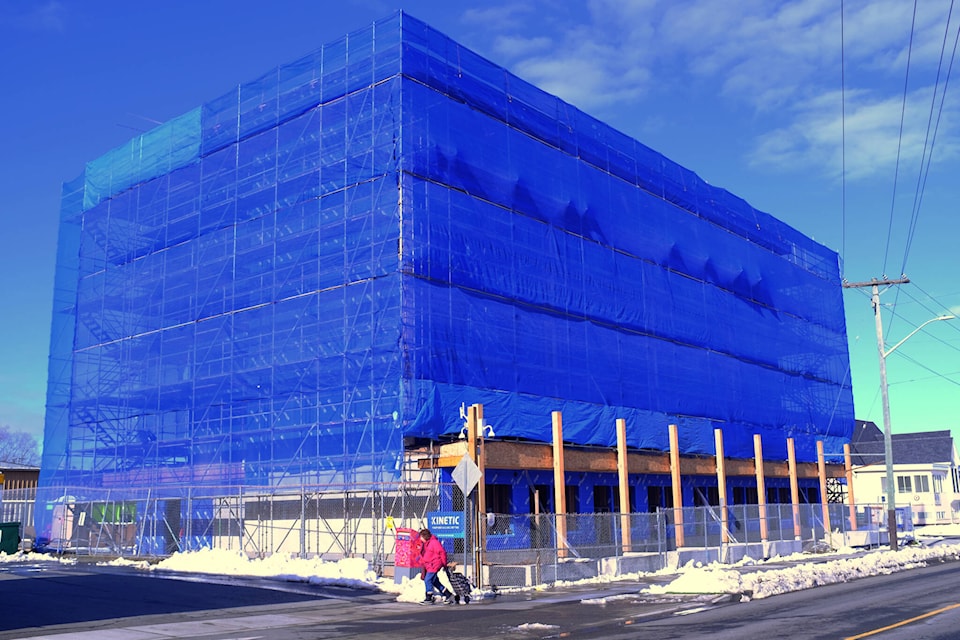Nearly a year after the Indigenous-led housing project was started, things are going smoothly and according to plan, said Roger Kishi, Wachiay program co-ordinator of homeless and housing programs.
Related: Funding in place for Indigenous affordable housing project in Courtenay
“We’re still moving forward with the construction. The past weekend has been pretty cold and we had some snow and rainstorms that slowed down some of the work… but the project is still on schedule,” said Kishi. “We’re looking at construction completion towards the end of this year and then hopefully moving tenants in early 2025.”
Located at 1679 McPhee Ave., Naut͛sa mawt (meaning “together as one”) is a five-storey building featuring 40 studio and one-bedroom housing units, close to amenities such as the Wachiay Friendship Centre Society (WFCS), public transit, a community centre, and commercial services.
For the Wachiay housing project, 20 per cent will be set at $375, or the income assistance shelter rate for a unit, 30 per cent at the low end of the market value, and half geared to income through subsidized rent.
While the application process will be open to all, Kishi stated that WFCS, in partnership with M’akola Housing Society, will prioritize low-income Indigenous elders. The tenant selection process is set to begin in late summer or early fall of this year.
“Indigenous peoples were over-represented in the homeless population compared to the population in general,” said Kishi. “The majority of Indigenous people do not live on reserves; they live in urban areas across Canada.
“Indigenous housing and services providers have been advocating for years that the resources are not there to address the needs of the Indigenous community. There’s a lot more work that needs to be done.”
The last Point-in-Time homeless count, published in October 2023, revealed that 28 per cent of respondents identified as Indigenous, despite Indigenous individuals making up only seven per cent of the Valley’s total population.
Though Kishi welcomes the help of the provincial and municipal governments, as well as support from community partnerships, the need for more housing remains.
“There is still an overall need for affordable non-market housing in the Comox Valley,” he said. “Right now there are two funding opportunities available through BC Housing: the Community Housing Fund and the Indigenous Housing Fund. Hopefully, we’ll see some successful applicants from the Valley.”
RELATED: Courtenay project to house low-income Indigenous seniors, singles
NEWSLETTER: Sign up for local news updates to your email
